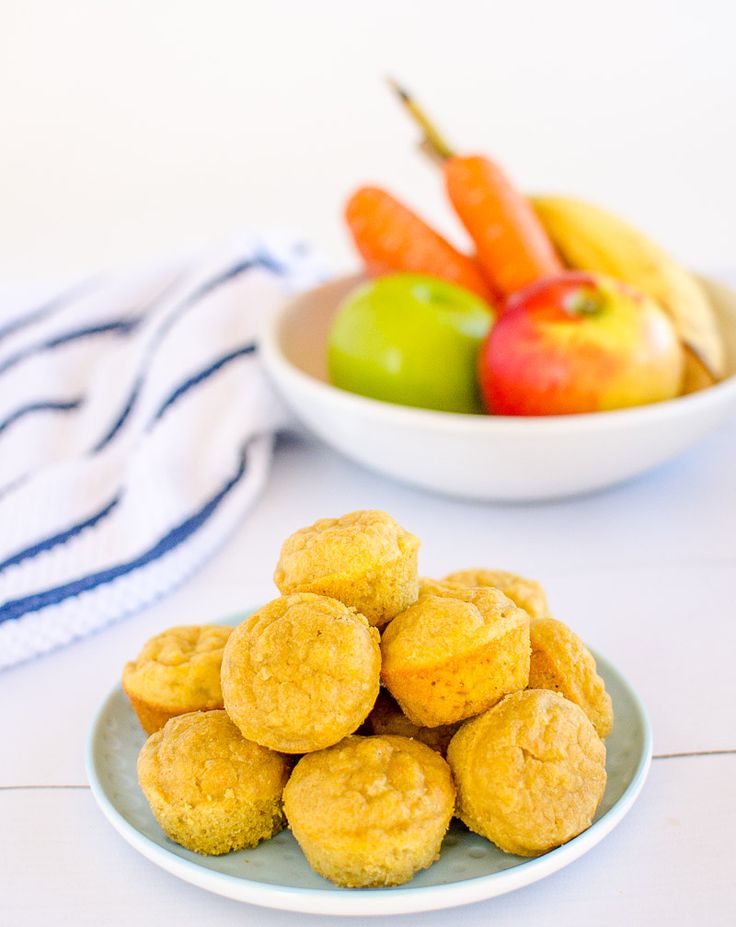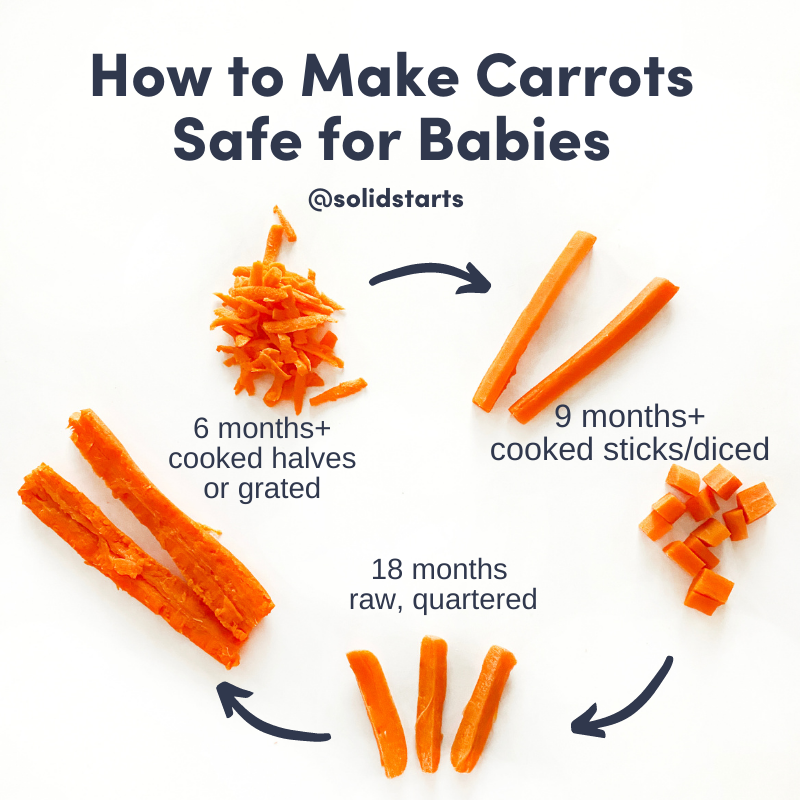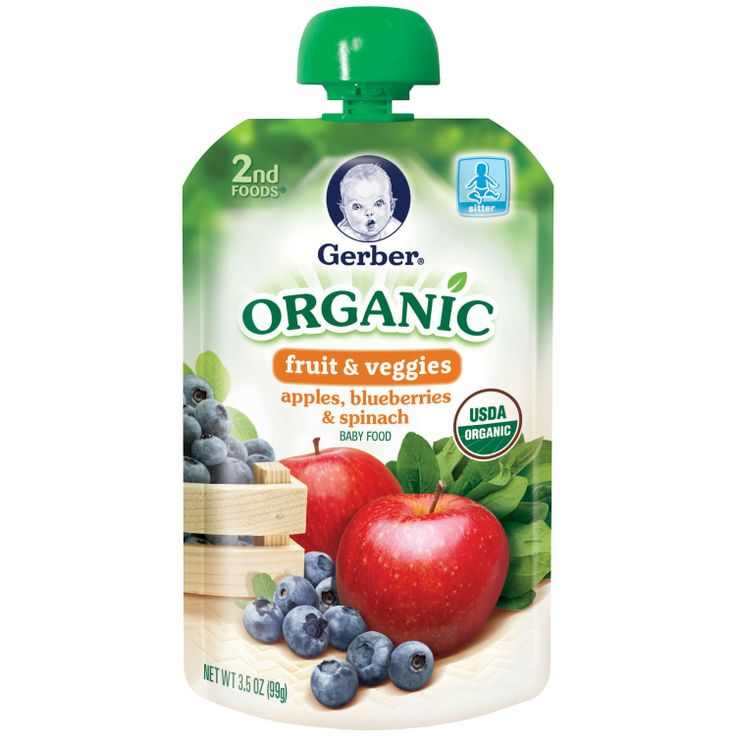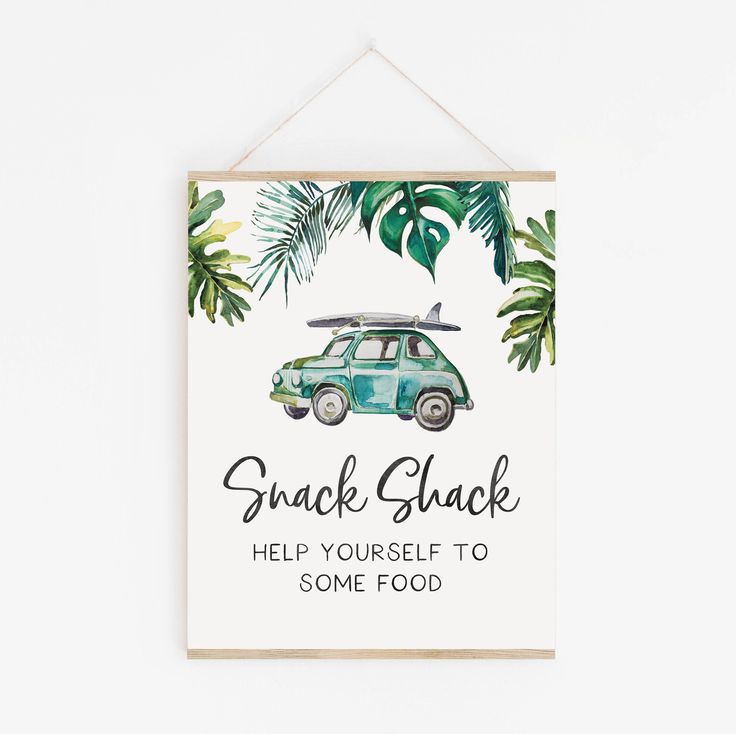3Rd stage baby food age
When is a child ready to try thicker solids?
Your baby’s made it through cereal mush, soupy carrots and ever-so-slightly texturized chicken and squash dinners. Now it’s time for the real culinary fun to start — welcome to Stage 3 baby food!
“Once your baby has successfully eaten Stage 2 foods, which have some texture to them, they can start Stage 3,” says Dr. Melanie Custer, a pediatrician at West Bend Pediatrics, Children’s Wisconsin.
How do you know your baby is ready to make the leap from purees to slightly more sophisticated fare? Here, experts and parents weigh in on moving on to Stage 3 baby food. Time to dig in!
What is Stage 3 baby food?
Most jars of Stage 3 baby food are still pretty pureed (hence, the jars), but your little one needn’t be restricted solely to foods that are, for all intents and purposes, mush. Instead, you can steer your budding gourmand toward soft, small pieces of whatever you’re having. Think: cut-up pieces of turkey meatballs, banana chunks and small squares of tofu.
“Stage 3 baby foods are thick blended foods with chewable chunks, such as the kind you find at the grocery store, or small cut-up pieces of easily chewed table foods, which are usually referred to as ‘finger foods’,” says Dr. Kristen Treegoob, a pediatrician at Children’s Hospital of Philadelphia. (Avoid placing chunks of food in blends and purees, as it may cause a choking risk.)
“Stage 3 baby foods are thick blended foods with chewable chunks, such as the kind you find at the grocery store, or small cut-up pieces of easily chewed table foods, which are usually referred to as ‘finger foods.'”
DR. KRISTEN TREEGOOB, PEDIATRICIAN
And be sure to bear in mind that every child is different and develops at their own individual pace. Check with your child’s doctor for baby food recommendations during the first year.
When to start Stage 3 baby food
“Typically, 9 months is the age babies start eating Stage 3 foods,” says Dr. Zulma Laracuente, a pediatrician in Alexandria, Louisiana. “But, generally-speaking, 9 to 12 months is considered a time of slowly transitioning your baby to table food.” (In other words, no more cooking and serving separate meals!)
“But, generally-speaking, 9 to 12 months is considered a time of slowly transitioning your baby to table food.” (In other words, no more cooking and serving separate meals!)
Does that mean you baby is ready to tuck into a T-bone steak with a side of broccoli rabe? No. At least, not in the traditional form. But as long as food is small and very easy for baby to work through, it’s OK.
While the idea of having your 10-month-old feed themselves while you sit down to your own meal probably sounds heavenly, bear in mind, every child gets there in their own time.
“My first child couldn’t wait to eat mashed up meatballs and soft carrots on his own,” says mom of two Jennifer Reilly of New York City. “But my second? Not so much. Aside from puffs, I was still spoon-feeding him at nearly a year!”
Signs baby is ready to start Stage 3 or finger food
As your baby’s oral skills and hand-eye coordination develop, they’re moving closer to being able to feed themselves, either with their hands or a spoon. (Though, according to the Cleveland Clinic, babies usually don’t get the hang of utensils until at least 12 months.)
(Though, according to the Cleveland Clinic, babies usually don’t get the hang of utensils until at least 12 months.)
According to Jenifer Thompson, R.D., an advanced practice dietician at Johns Hopkins in Baltimore, babies can move past traditional baby foods and onto “pick-ups” (finger foods) as their pincer grasp skills are honed.
“By the time baby is between 8 to 12 months old, they should be able to pick up small, soft pieces of finger foods with their finger and thumb and bring them to their mouth,” she says.
Other signs your baby is ready to take meal time into their own hands? They tell you — as only a baby can.
“I knew my son was ready to try table foods when he started grabbing at the spoon every time I went to feed him,” says mom of two Darcy McConnell of Garwood, New Jersey. “Even though he didn’t actually use a fork or spoon for a few months, he loved holding on to them while he picked up his food. It was so cute!”
What Stage 3 foods to start with
Once you’ve hit the Stage 3 phase, (almost) anything goes, as long as it’s the right texture for baby. For instance, it’s OK to feed your child what the rest of the family is having for dinner, as long as you take proper precautions, such as making sure food is easy to chew and cut up into small pieces.
For instance, it’s OK to feed your child what the rest of the family is having for dinner, as long as you take proper precautions, such as making sure food is easy to chew and cut up into small pieces.
“Once babies are about 9 months old, they should safely be able to self-feed a variety of foods,” says Treegoob.
At this point in your baby’s life, solid food is starting to make up a significant part of their diet, so it’s important to offer foods that are nutritious. Also, exposing your child to different foods that are nourishing from an early age can help lay the groundwork for good, long-term habits.
“Parents should introduce a variety of healthy foods from different food groups with different textures by the end of the first year in order to help with healthy eating habits,” says Thompson.
“Parents should introduce a variety of healthy foods from different food groups with different textures by the end of the first year in order to help with healthy eating habits.
jenifer thompson, advanced practice dietician”
Here are a few good choices for Stage 3 foods, according to Thompson and Treegoob:
- Well-cooked vegetables of any variety.
- Ripe fruits of any variety. (Mashed or cut-up bananas work very well at this stage.)
- Shredded meat.
- Scrambled eggs.
- Soft cheese.
- Cooked pasta.
- Small pieces of tofu.
Which foods to avoid during Stage 3
When your baby starts eating what the rest of the family is having, by all means, rejoice over having to prepare fewer dishes. However, if you’re hitting up the drive-thru after soccer practice with your older kid, skip the Happy Meal for your baby, regardless of how you serve it.
“When it comes to feeding babies, I recommend avoiding heavily salted or sweetened foods, as well as fast food,” says Treegoob.
The reason doctors advise being mindful of baby’s salt intake? In addition to it possibly contributing to bad eating habits overall, a 2011 study published in the European Journal of Clinical Nutrition found that infants who consumed over 400 milligrams of sodium per day (the maximum UK recommendation for children up to age 12 months) were potentially at risk of “harming developing kidneys” and causing “high blood pressure in later life. ”
”
According to Treegoob, parents should also avoid any foods that may pose a choking risk to children, such as:
- Popcorn.
- Whole grapes.
- Whole peanuts.
- Raisins.
- Hot dogs.
- Hard candy.
- Seeds.
And finally, parents and caregivers should understand how long baby foods last and forgo giving a baby honey until after their 1st birthday, as it can cause a botulism infection.
How to start Stage 3 foods safely
As with Stage 1 and Stage 2 baby food, babies still should eat sitting upright with an adult nearby.
“Once an infant is ready for Stage 3 solids and is able to finger feed themselves, it’s still important to watch your baby eat, so you can help pace them and identify signs of choking early,” says Treegoob. “You can also offer them sips of formula, breast milk or a little water every few bites when they begin eating more than a few ounces at a time of Stage 3 foods to make sure they don’t eat too quickly.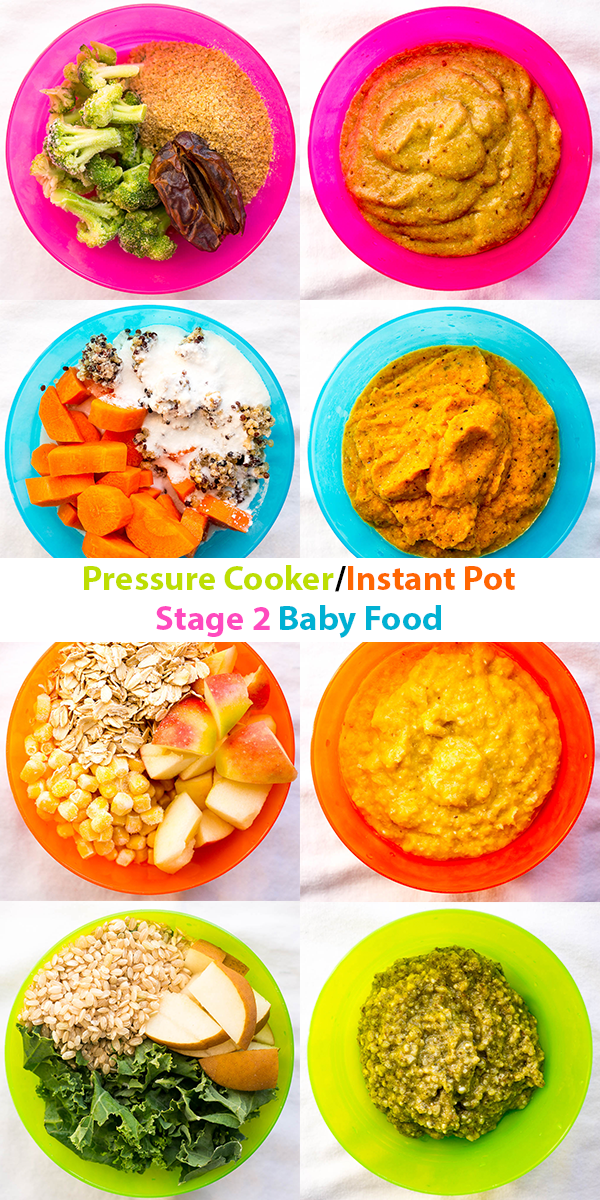 ”
”
“Once an infant is ready for Stage 3 solids and is able to finger feed themselves, it’s still important to watch your baby eat, so you can help pace them and identify signs of choking early.”
DR. KRISTEN TREEGOOB, PEDIATRICIAN
Also, be sure the food you’re giving your baby is prepared for their developmental stage. According to Kids Health, parents should slice food up into small pieces in addition to cooking it a little longer in order to make sure it’s very soft. (And, of course, check the temperature!)
Once your baby gets a taste of “real food,” don’t be surprised if their interest in formula or breast milk wanes.
“Between 7 to 9 months, parents may notice that their baby shows interest in smaller or less frequent bottles or breastfeeds,” says Treegoob. “As long as weight remains on track and the baby is staying hydrated, there’s no cause for concern.”
According to Treegoob, babies between 4 to 6 months old typically drink between 24 to 40 ounces of breast milk or formula per day; 24 to 32 ounces from 6 to 9 months; and by 9 to 12 months, when they’re eating more table foods, that volume can decrease to as low as 16 to 24 ounces.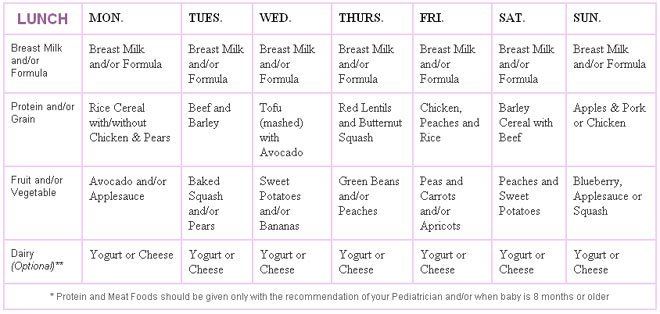
The American Academy of Pediatrics recommends giving baby between 4 to 6 ounces of breast milk or formula four times a day, along with three meals a day and two small snacks. What you give your little one is up to you — just make sure it’s healthy and texturally appropriate for their age.
The 3 baby food stages: What foods and when
Making the leap from breast milk or formula to solids and then eventually to table food is an exciting time. But it’s also a little confusing because there isn’t a one-size-fits-all rule when it comes to baby food stages. While one child may happily take to pureed carrots at 6 months, another may purse their lips at anything but a breast or bottle until 8 months.
To simplify the whole process, here’s a general rule of thumb to keep in mind: Most foods are OK to give to babies in the first year, as long as they’re properly prepared. And if you’re concerned about food storage, read more from our experts on how long baby food lasts.
Here’s the quick lowdown on what to feed baby and when:
- Stage 1: Purees (4 to 6 months).
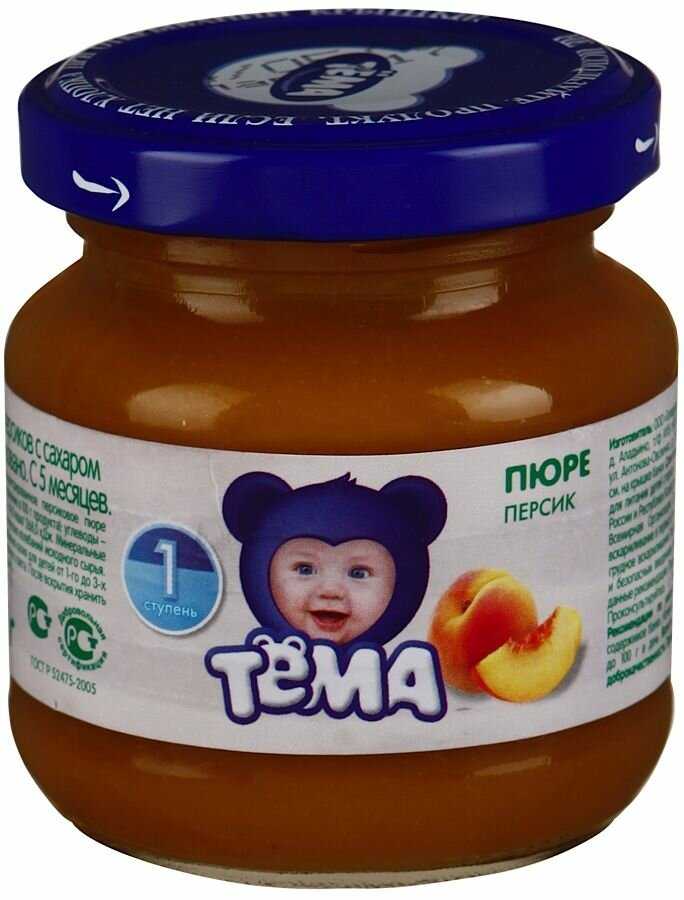
- Stage 2: Thicker consistency (6 to 9 months).
- Stage 3: Soft, chewable chunks (10 to 12 months).
“With the exception of raw or cooked honey, which shouldn’t be consumed until 12 months because of the risk of infantile botulism, babies can have any food that is texturally appropriate for their developmental feeding stage,” says Dr. Kristen Treegoob, a pediatrician at Children’s Hospital of Philadelphia.
In other words, it’s perfectly fine to give both a 6- and 12-month-old peas, but for the 6-month-old, they need to be pureed.
In the past, parents have been advised to start their baby with single-grain cereals, such as rice cereal, but the American Academy of Pediatrics (AAP) now says there’s “no medical evidence that introducing solid foods in any particular order has an advantage for your baby” — nutritionally or when it comes to long-term food preferences. (So, when your Aunt Joanne tells you that your baby will be a vegetable-hater for life if you start off with applesauce, she’s wrong. )
)
All of this said, there is a method to the messy madness that is the three stages of baby food. In order to make things less complicated — and more delicious — we tapped top experts and veteran parents to find out everything you need to know about feeding little ones at every stage (plus, we included a handy baby food stages chart). All you have to do now is serve the food and clean the high chair!
Stage 1 (4 to 6 months): What you need to know
The fun begins! Stage 1 baby food is typically for babies who are between the ages of 4 months and 6 months. But as with all things parenting-related, it’s important to keep in mind that each baby is different, and there’s no hard and fast rule for starting solids.
“While the AAP recommends exclusively breastfeeding from birth to age 6 months, it’s important to remember that not every baby is exclusively breastfed,” says Dr. Zulma Laracuente, a pediatrician in Alexandria, Louisiana. “Also, some babies show signs of readiness to start food earlier than others.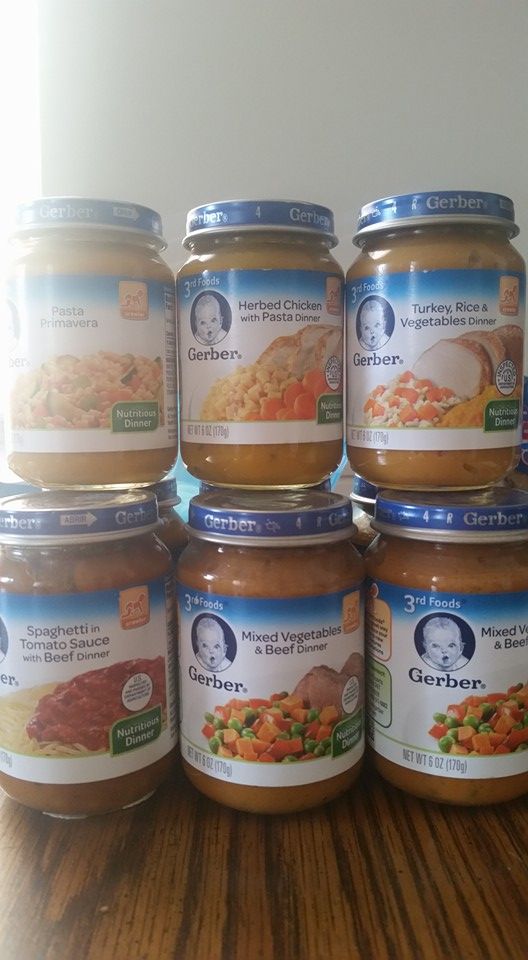 You know your baby best.”
You know your baby best.”
Solids that fall under the Stage 1 category are thin and smooth in texture — not much thicker than breast milk or formula — and contain a single ingredient. If you’re making your baby’s food at home, make sure it’s blended to an almost-watery puree.
“Stage 1 baby foods should have no chunks whatsoever,” says Jenifer Thompson, registered dietician and advanced practice dietician at Johns Hopkins in Baltimore. “Formula or breast milk can be added to the purees to make them thinner.”
While there’s no specific food parents need to start with, many pediatricians recommend beginning with iron-rich foods, such as iron-fortified cereals or pureed meats.
“The reason we advise introducing solids at 6 months and starting with iron-containing foods is because iron stores that were built up during pregnancy are depleting, and iron is important for infants’ brain development,” says Dr. Melanie Custer, a pediatrician at Deaconess Clinic in Evansville, Indiana.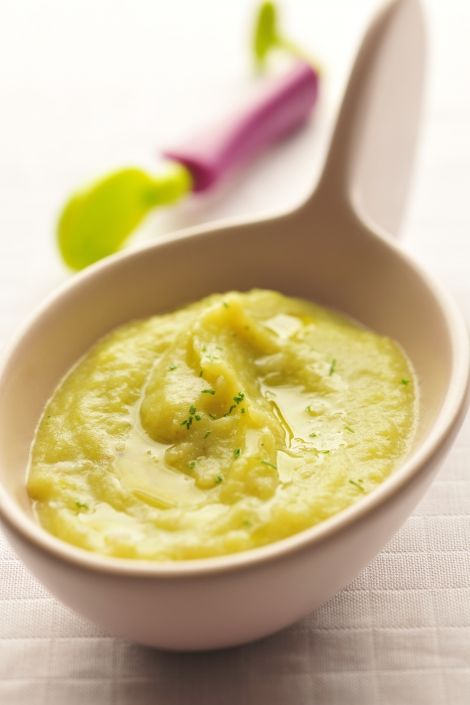
Custer also says that babies should “absolutely not” decrease their breast milk or formula when they first start off with solids.
“Infants still should receive 24 to 32 ounces of formula or breast milk each day,” she says. “Solids at this point are more of a snack, with baby eating about 3 to 4 tablespoons once or twice a day.”
How to tell your baby is ready for Stage 1
According to Treegoob, here are the signs your baby is prepared to start Stage 1 foods:
- They’re showing an interest in what family members are eating.
- They’re learning to open their mouths for a spoon.
- They’ve outgrown the involuntary habit of pushing food and spoons out of their mouth with their tongue.
- They have steady head control.
- They have the ability to move food from a spoon to their throat and swallow without choking.
Stage 2 (6 to 9 months): What you need to know
Time to mix it up! While Stage 2 solids are still basically mush, food has a little more texture at this point, as well as a few soft chunks.
“Stage 2 baby foods are thicker in consistency than Stage 1 purees, and many of the jars you find in stores have some small mashable bits in them,” says Treegoob. “These are great for infants who have done well with Stage 1 but who are not quite ready to chew. The typical age for Stage 2 is between 6 to 9 months.”
Treegoob also notes that the 7 to 9 month time frame is also when many babies begin modifying their breast milk or formula intake.
“As long as an infant’s weight remains on track and they’re drinking enough to stay hydrated, there isn’t a reason to worry if baby is showing interest in smaller or less frequent bottle or breastfeeds,” she says. “Infants typically take in somewhere between 24 to 32 ounces a day when they’re between 6 to 9 months.”
Whether you’re making your little one’s food on your own or getting it pre-made at the store, you have a little more room to play once you hit Stage 2.
“In addition to being thicker in consistency, Stage 2 foods usually have multiple ingredients, including some spices,” says Custer. “At this point, baby is usually taking in more food than they were in Stage 1, so it’s important to make sure they’re being introduced to a wide variety of foods from different food groups.”
“At this point, baby is usually taking in more food than they were in Stage 1, so it’s important to make sure they’re being introduced to a wide variety of foods from different food groups.”
According to the AAP, babies should be eating about 4 ounces of solids — about one small jar of baby food — at each of their meals.
How to tell your baby is ready for Stage 2
Once your baby has consistently been eating Stage 1 foods, they’re likely ready for the next step. Here are other signs to look for, according to Thompson:
- Their oral skills are continuing to develop.
- They’re consistently taking food in and swallowing when you offer it (and not spitting it out).
Stage 3 (9 to 12 months): What you need to know
Now, the true culinary adventure begins — Stage 3 foods! While some babies will still happily have mom and dad spoon-feed them mashed food at this age, many babies will have what you’re having at this point — and they’ll do it themselves, thank you very much.
“As soon as we thought he was ready — at about 9 months — we started giving my son softer, cut-up versions of whatever we were having for dinner,” says mom of two Jennifer Reilly, of New York City. “There was more cleanup, but I actually got to sit down and eat my meal!”
Once babies hit the age range for Stage 3 foods, most have the oral and fine motor skills to self-feed.
“Between 8 to 12 months, babies develop the pincer grasp ability and should be able to pick up small pieces of finger foods with their finger and thumb and bring it to their mouth,” says Thompson.
Technically speaking, Stage 3 solids are thicker, more sophisticated versions of the baby food your little one has already been eating (think vegetable and beef pilaf or tender chicken and stars), but also, they’re not necessary for everyone.
“Stage 3 food is starting to have chunks mixed in, in order to prepare baby for table foods,” says Custer. “But some babies wind up skipping this stage altogether and go straight to soft table foods. ”
”
While it’s perfectly fine to continue with Stage 3 foods up to your child’s first birthday, Treegoob advises letting your baby try their hand at “real food.” “Well-cooked veggies, ripe fruits, shredded meat, scrambled eggs, soft cheese and cooked pasta are all great options for babies this age,” she notes.
Between 9 months and 12 months is also when you’re likely to see a significant drop in how much breast milk or formula your baby is drinking.
“As babies continue to eat table foods, I’ve seen their breast milk or formula intake drop to as low as 16 to 20 ounces per day,” Treegoob says. “That said, some infants continue to show a heavy preference for breast milk or formula despite months of solid introduction. If you feel like your baby may be drinking excessive amounts of breast milk or formula, and they have no interest in food, I would recommend speaking with your pediatrician.”
How to tell your baby is ready for table food
Your child’s readiness to start table food will likely be more discernible than any other baby food stage. As long as they’re continuing to hone their oral skills, as well as their ability to pick food up and bring it to their mouth, you can count on them to let you know they’re ready for “big kid” food.
As long as they’re continuing to hone their oral skills, as well as their ability to pick food up and bring it to their mouth, you can count on them to let you know they’re ready for “big kid” food.
“My daughter looked like she was ready for pasta, eggs and basically anything we were eating shortly after she started solids,” says mom of two Julie Cortez of Brooklyn, New York. “We waited until about 8 months, when we knew she knew how to properly eat, and sure enough, she ate her whole plate on the first go! We completely skipped the Stage 3 jars of food.”
Follow these safe feeding must-knows
Even though your baby’s eating skills will continue to progress as they gain more experience, it’s important baby is always sitting upright, strapped in a high chair and never left unattended while eating. Also, make sure table food is always soft and cut into small pieces to avoid choking hazards. When first starting out with solids, be sure to wait a few days before giving them something new.
“This allows for observation for any adverse reaction or intolerance to the new food,” Thompson says.
And finally, be sure to give your baby a wide range of healthy food in order to expose them to a variety of tastes and textures — and don’t be discouraged if they don’t take to a specific food at first.
“If baby refuses a food or makes a strange face when eating, this may simply mean that it is a new food and unfamiliar to them,” Thompson says. “Try again. It may take 10 to 20 exposures of a new food before they accept it.”
Here’s more on every baby food stage:
- Stage 1 baby food.
- Stage 2 baby food.
- Stage 3 baby food.
8-10 months - Encyclopedia Baby food
Stage 3 - 8-10 months
Levchuk Victoria ©8-10 months - time to study!
Third stage: 8-10 months
The third stage of baby food 8-10 months is a term that refers to baby food, meaning a thicker and more textured section.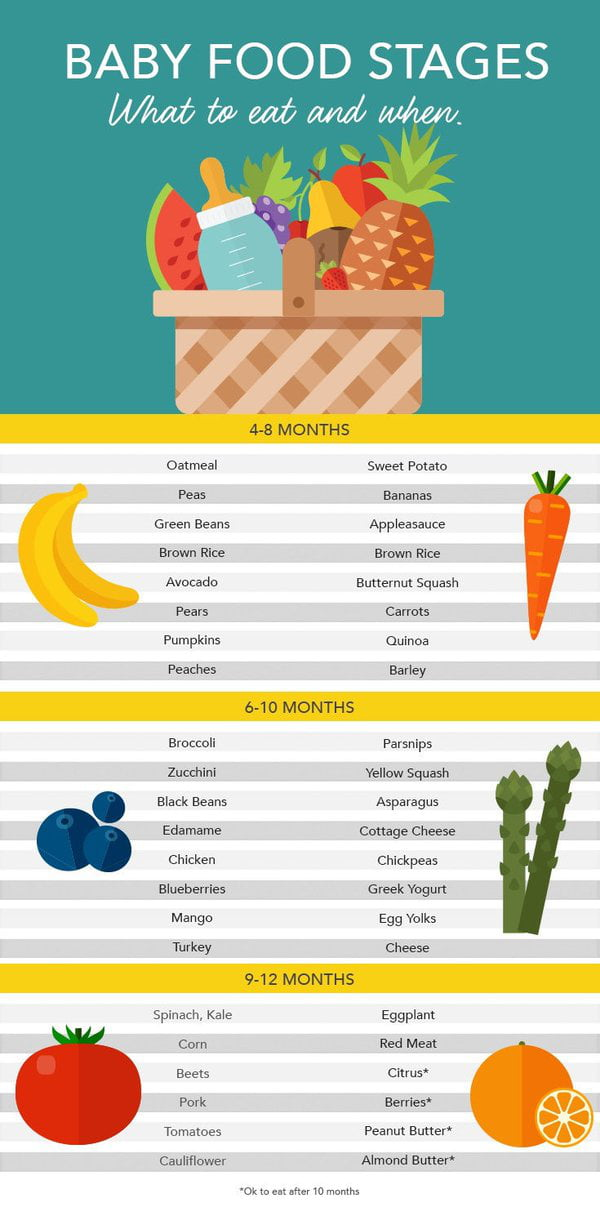 This stage of baby food also includes the ingredients that the child has been eating for the last 7-8 months. nine0003
This stage of baby food also includes the ingredients that the child has been eating for the last 7-8 months. nine0003
Some parents define the third stage of baby feeding as the shortest. Foods during this period should be appropriate for the age of the infant who is beginning to learn to "chew" foods and who have completely lost the tongue thrust reflex. Ready-made baby food of the third stage is aimed at children who are aged from 8-10 to 12 months.
The baby has grown up, teeth have appeared, motor activity has increased, it is already possible to introduce food with a thicker consistency with the presence of pieces of different sizes, but not very large. Now the main thing is to help the baby learn to chew and overcome small pieces of food. At this stage, the baby is able to take small pieces of food with his hands and direct them almost exactly into his mouth, then chew it all, the mother should encourage the development of these skills. Therefore, the mother offers the baby finger food: unsweetened cookies, apple slices, pieces of cheese or boiled carrots. nine0003
nine0003
Breastfeeding continues on demand, but it is already possible to give the baby to drink from a cup, of course the best drink is water, but you can also offer compote or yogurt. Breastfed babies may refuse extra fluids, but don't worry. When feeding on demand, the baby receives enough liquid, at this stage it is important for the mother to provide a choice for the baby.
Your baby's diet should be varied. Vegetables are boiled until soft, and boiled meat passes through a meat grinder, and then only warms up. Variety includes vegetables, meat, fruits, legumes, a small amount of fish, kefir, eggs (although you can postpone the entry to a later period), cheese, liver. nine0003
Be sure to boil the eggs thoroughly and never offer raw eggs in any form, so as not to become infected with salmonella. The main thing at every meal is to offer the child finger food, for example, pieces of carrots, pears, toasted bread with a piece of butter. Remember that sugar and salt are still not recommended! A breastfed child has three meals a day, while artificial children have five meals a day. Between main meals, you can give your baby light snacks yogurt, apple, kefir, bread in small quantities. nine0003
The third stage of baby food includes products that still have the lowest index on the allergy scale, but some dairy products and wheat products are introduced at this stage. As a rule, during this period, those foods that are more fibrous, slightly more acidic and contain more protein are introduced. These products should be well tolerated and absorbed by the child.
Also during this period, most parents introduce some spices, raw fruits and pasta. nine0003
Remember that babies don't have molars until 14-18 months, so foods should be mashed with small chunks of structured food and easily pass between the gums.
Social networks:
Union of pediatricians of Russia
Home> Information for parents> Parents> Foods from 1 year to 3 years old
Feeding children aged 1 to 3 years
The period from 1 to 3 years of life is a crucial stage in the transition to an adult type of nutrition, which has certain features. In order to ensure that all the necessary nutrients enter the child's body and at the same time prevent an excess of individual nutrients, nutrition should be balanced and varied.
In order to ensure that all the necessary nutrients enter the child's body and at the same time prevent an excess of individual nutrients, nutrition should be balanced and varied.
The daily amount of food for children aged 1 to 1.5 years should be 1000-1200 g, from 1.5 to 3 years - 1200-1500 g, the amount of food in one feeding should not exceed 300-350 ml. The diet consists of three main meals per day and two snacks. It is considered optimal when breakfast is 25% of the total energy density of the diet, lunch is 30–35%, dinner is 20%, and additional meals are about 10%. In general, the child can eat the same food as the rest of the family. nine0003
In the diet of a child of 1–3 years of age , must be present daily: meat of animals or poultry, dairy and sour-milk products, vegetables, fruits, bread, cereals, vegetable and butter; fish and eggs are included in the diet 2-3 times a week.
Cereal products: bread - 2-3 servings per day, cereals and side dishes - 1 time per day
Fruit and/or vegetables: at least 5 times a day
Dairy products: at least 3 servings per day (including those used to make cereals, yoghurts, fermented milk drinks, cottage cheese, infant formula or breast milk). nine0003
nine0003
Domestic pediatricians recommend, when compiling a diet for children aged 1–3 years, preference should be given to specialized children's dairy products of industrial production that meet high quality requirements and safety indicators for this age. Most children's dairy products are additionally enriched with vitamins and/or minerals and other biologically active components, taking into account the physiological needs of children of this age. At the same time, in foreign recommendations, children over 1 year old are offered the gradual introduction of whole cow's milk, which is rich in fats necessary for proper growth and development, the absorption of vitamins A and D, the development of the child's brain and nervous system. nine0003
Meat dishes: 2-3 meals per day
Fish dishes: 2-3 servings per week
Eggs: 2-3 per week
Dietary fats: 3-4 teaspoons of butter and/or vegetable oil oils per day
When cooking, use the minimum amount of salt and sugar, and do not add them to industrial products.





